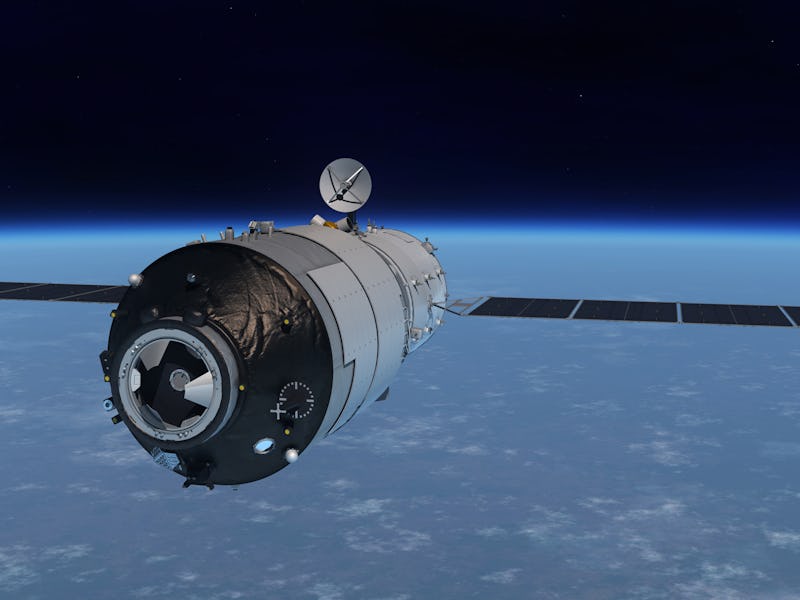China’s Runaway Space Station Might Cause a “Rain of Metal”

Five years after it was launched, the Chinese space station Tiangong-1 is out of control. The careening craft is expected to reenter the Earth’s atmosphere in the latter half of 2017, but scientists aren’t sure exactly when, or where, it will come down.
Tiangong-1, which translates to “Heavenly Palace,” was intended to be a prototype for future Chinese space stations. China practiced docking an unmanned module with the craft, and two manned missions made their way to the laboratory in 2012 and 2013. It stopped sending data back to Earth in March, and Tiangong-1’s upgraded replacement, Tiangong-2, launched earlier this month.
China’s vague timeline for Tiangong-1’s return to earth is a bit of a red flag. If they can’t give a better estimate of when the spacecraft will reenter the atmosphere, it probably means they’ve lost control of it. Gravity alone will determine when the craft crashes. “You really can’t steer these things,” astrophysicist Jonathan McDowell told the Guardian. “Not knowing when it’s going to come down translates as not knowing where it’s going to come down.”
Chinese astronauts aboard the Tiangong-1 in 2012
Eight metric tons of metal falling out of the sky seems like a pretty big problem, but it’s probably not something to worry about. Most of the craft will burn up as it reenters the atmosphere, and only the densest parts, like the rocket engines, will actually make it to the Earth’s surface. And the probability of those hunks of metal landing near humans is pretty low. Space trash falls to Earth all the time, and it hasn’t hit anyone yet.